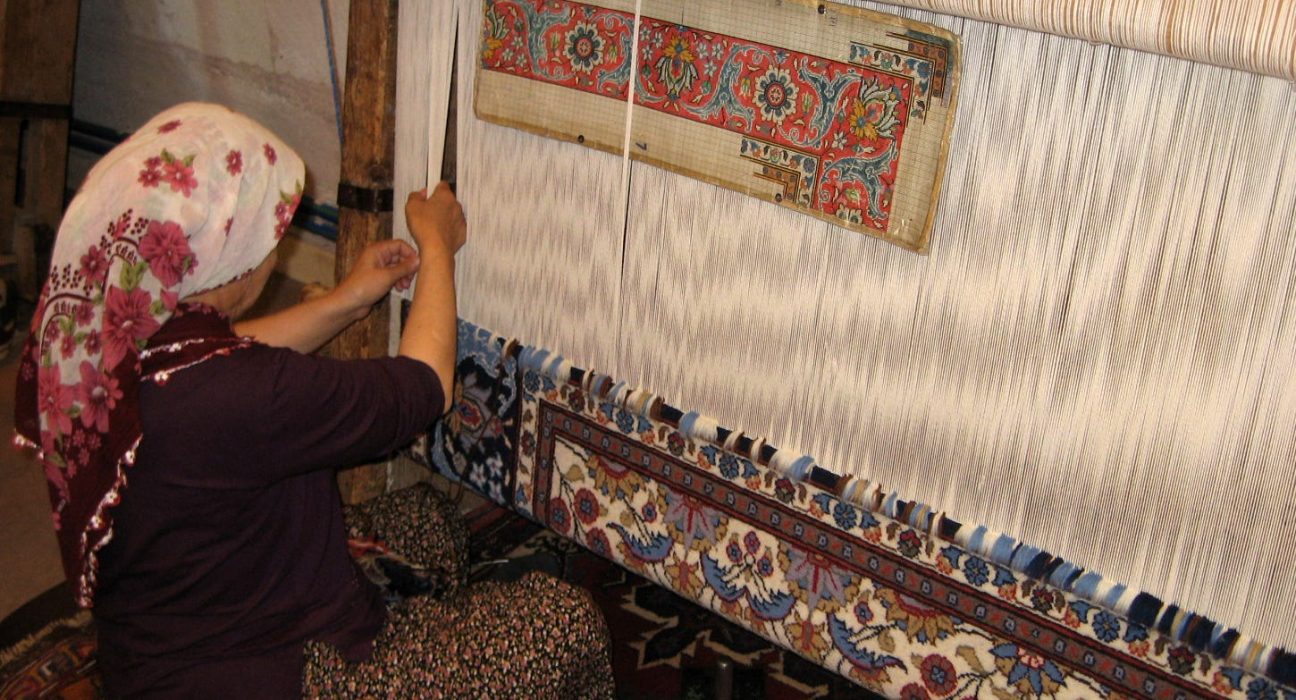The Artistic Heritage of Indian Carpets and Weaving Traditions

Indian carpets and weaving traditions are a timeless testament to the country’s rich cultural heritage and craftsmanship. These exquisite textiles, known for their intricate designs and unmatched quality, have been woven for centuries and continue to play a significant role in global textile art. From the delicate Persian-inspired patterns to the bold geometric motifs of the northwestern regions, Indian carpets are not just floor coverings but works of art that carry deep cultural, spiritual, and historical meanings.
The Origins and Evolution of Carpet Weaving in India
The art of carpet weaving in India can be traced back to the Mughal period in the 16th century when Persian weavers were invited to the subcontinent by the Mughal emperors. These skilled artisans brought with them the technique of knotting and weaving fine carpets that combined Persian artistry with Indian motifs, leading to the creation of the iconic Mughal carpets.
Over time, Indian carpet weaving evolved, absorbing influences from various regions and dynasties. The introduction of Indian elements, such as lotus motifs, elephants, and paisleys, infused these carpets with a unique charm that set them apart from their Persian counterparts. The craftsmanship and designs of Indian carpets began to reflect the rich culture, wildlife, and traditions of India, becoming a medium to tell stories through threads and colors.
Traditional Weaving Techniques and Regional Variations
India boasts a vast diversity of weaving traditions, with each region having its distinct style and technique. Some of the most famous carpet-weaving centers include Kashmir, Punjab, Rajasthan, Uttar Pradesh, and Gujarat. The region’s culture, geography, and climate influence the patterns and materials used in their carpets, creating a rich mosaic of weaving traditions across the country.
In Kashmir, for example, carpets are known for their fine woolen threads and intricate floral patterns inspired by Mughal gardens. Kashmiri carpets often feature motifs like the chinar leaf, peacocks, and paisleys, with a heavy influence from Persian art. The technique used in these carpets is called asasi, a Persian knotting method that allows for detailed and delicate designs.
In contrast, the carpets of Rajasthan are known for their bold colors and geometric patterns, often reflecting the region’s vibrant culture. Rajasthan’s carpets often feature motifs inspired by traditional Indian art, such as elephants, birds, and geometric shapes, crafted with thick wool and bright dyes.
In the heart of Uttar Pradesh, especially in areas like Mirzapur and Bhadohi, the weaving traditions are highly prized for their intricate Persian and Turkish designs. These carpets are crafted using the Kermani weaving technique and are known for their fine craftsmanship and detailed geometric patterns. The region’s carpets have long been associated with luxury and refinement, with designs that often include floral, geometric, and curvilinear motifs.
Materials and Craftsmanship in Indian Carpets
The materials used in Indian carpets vary, depending on the region and the style of weaving. While wool is the most commonly used fiber, silk and cotton are also widely employed, particularly in high-end carpets. Kashmir, known for its cold winters, produces high-quality wool, while Rajasthan and Gujarat use a blend of wool and cotton to create their distinctive carpets. Silk carpets from India are particularly prized for their lustrous sheen and fine detail.
The quality of Indian carpets is also defined by the knotting technique used by the weavers. The Asasi knot, used in Kashmir, and the Senneh knot, used in parts of Rajasthan and Gujarat, are just two of the intricate knotting methods that define the character of Indian carpets. Weaving is done by hand, with each knot being tied individually, making the process slow and meticulous. The patience and skill involved in this work are what give Indian carpets their timeless beauty and unparalleled artistry.
Symbolism and Cultural Significance
Indian carpets have always held more than aesthetic value—they are imbued with cultural and spiritual symbolism. Carpets often feature motifs drawn from nature, religion, and mythology, with each design element carrying significance. The lotus, for example, is a recurring symbol in many Indian carpets and represents purity, beauty, and spiritual awakening. Elephants, another common motif, symbolize strength, wisdom, and good fortune.
In rural India, carpets and rugs are often woven for personal use and are seen as a way to connect with family traditions and community rituals. The act of weaving a carpet is not just an artistic expression but a spiritual and cultural practice that binds generations of artisans together. These textiles often serve as heirlooms, passed down through families, connecting past, present, and future.
The Global Appeal of Indian Carpets
Indian carpets have long been admired by collectors and connoisseurs worldwide. From European palaces to American living rooms, the unique artistry of Indian carpets has found a place in homes and institutions across the globe. The popularity of Indian carpets lies not only in their beauty but also in their durability and versatility. These carpets, often made with high-quality natural fibers, are designed to last for generations.
The global appeal of Indian carpets has led to the creation of a thriving export market. Traditional Indian carpet-making techniques are now being taught in schools and institutions, ensuring that the craft continues to evolve and thrive. At the same time, modern designers are reinterpreting traditional carpet-making techniques, combining them with contemporary aesthetics to create new and innovative designs that appeal to global tastes.
Conclusion
Indian carpets and weaving traditions are an essential part of the country’s rich cultural heritage, blending artistry, history, and craftsmanship in a way that few other textiles can. From the intricate floral patterns of Kashmiri carpets to the bold geometric designs of Rajasthan, Indian carpets tell the story of a nation’s past, present, and future. They represent more than just functional items—they are woven pieces of art that carry with them the spirit and essence of India’s diverse cultural traditions. As the demand for these carpets grows, their timeless beauty and unparalleled craftsmanship continue to be appreciated both in India and around the world, ensuring that the legacy of Indian weaving will endure for generations to come.










